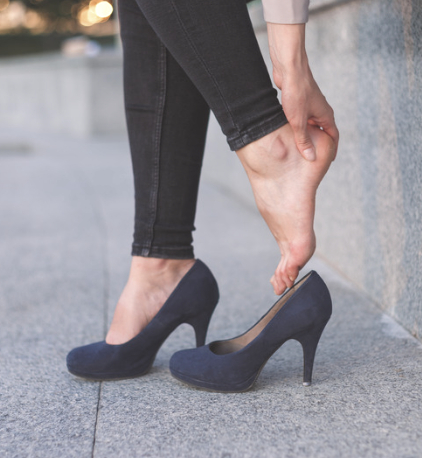What to do when the bottom of your heel hurts?
Heel pain is usually caused by overuse. The usual causes are Achilles tendonitis, plantar fasciitis, and arthritis. Plantar fasciitis, also called heel spurs, is the most common cause of heel pain that we encounter and treat. It can result to a pain at the bottom and inner edge of the heel, and can be mild to severe.
The way you are being treated for your heel pain must depend to your level of injury, symptoms, routines, and lifestyle. With conservative treatment, such as cooling the painful area, stretching, and altering or avoiding activities that cause pain, most people with plantar fasciitis heal in few months.
You should see a foot specialist such as a podiatrist if you have:
- sudden, severe pain after an injury
- persistent heel pain
Common Treatments for Plantar Heel Pain
What are the treatments available if your heel hurts? Here are some :
- Custom Orthotic Devices – your podiatrist might prescribe off-the-shelf or custom-fitted arch supports (orthotics) to distribute the pressure on your feet more evenly.
- Heel Cushions – come in many sizes and shapes, made of foams, gels, low durometer EVAs, etc. Their mechanical function is to soften the heel, and also sometimes transfer weight forward off the heel. The goal of all of these is to soften the heel at impact, decreasing the pain.
- Taping – its mechanical function is in reducing the stress on the tissue that attaches into the heel. It is also the basis of how podiatrists decide if someone should get orthotic devices based on a negative or positive response.
- Achilles Stretching – its function is to decrease the stress on the arch structures attaching into the heel. The less achilles tightness, the less strain on the arch, and plantar fascia, in fact the entire foot.
- Plantar Fascia Stretching – its function may be in stretching the tissue around it more than the fascia itself. You are attempting to loosen up the fascial bands with gentle non painful stretches.
- Laser – is a newer non-invasive remedy that can offer real relief to someone suffering from chronic plantar fasciitis.
- Dry needling/Electroacupuncture – less invasive procedures, stimulate myofascial trigger points. This method is one of the most famous modalities with very small side effects used for treating chronic pains.
Are you suffering from this condition? At The Chelsea Clinic, we can help. One of our podiatrist can assist and then recommend what treatments are best to get you back on track.  Podiatrist South Kensington
Podiatrist South Kensington
Schedule an appointment here or you may call us at +44 (0) 207 101 4000. 
We hope you have a feetastic day! 

-The Chelsea Clinic and Team


 Podiatrist South Kensington
Podiatrist South Kensington




